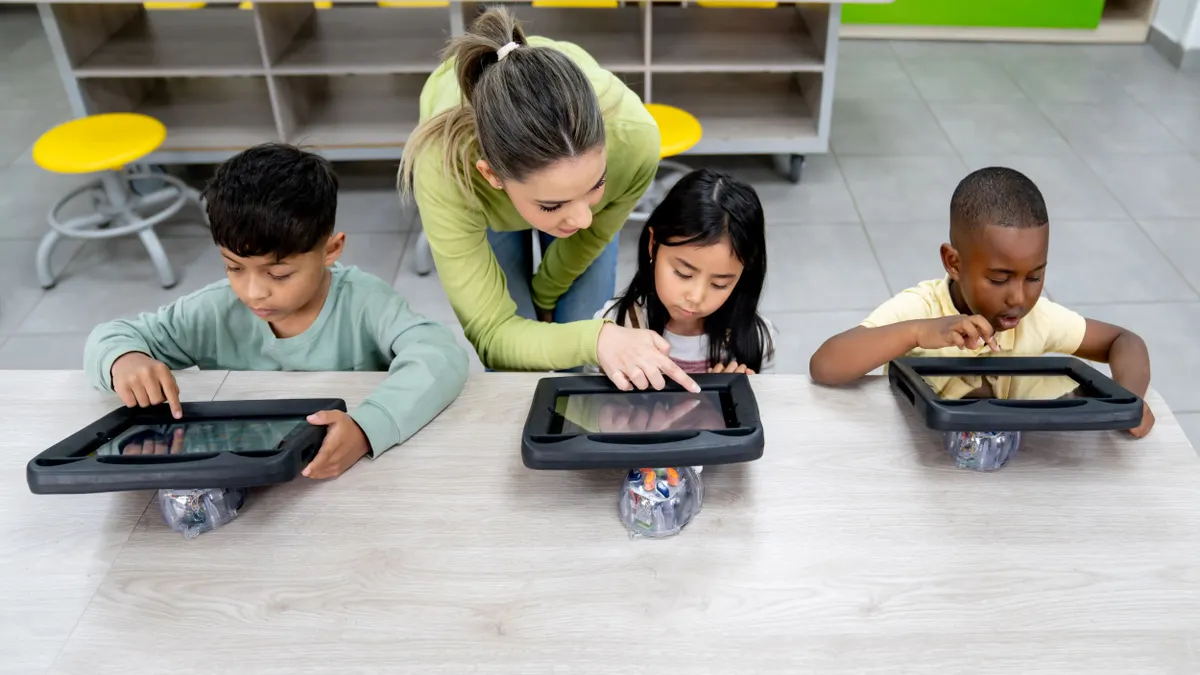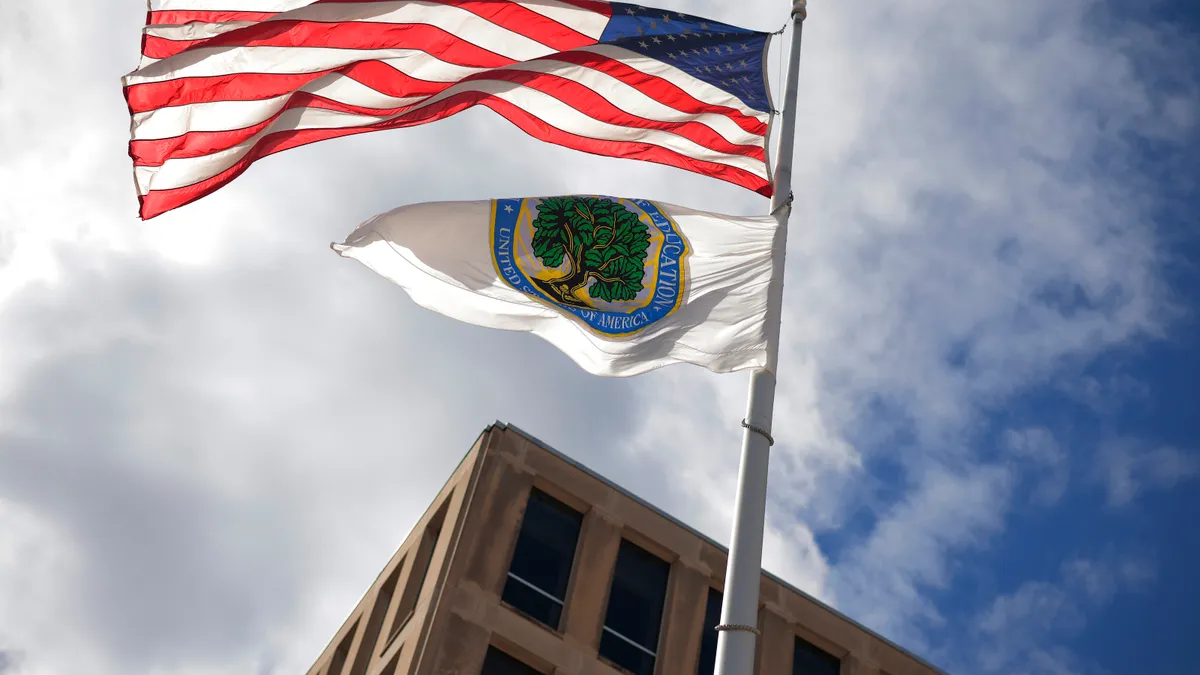Colorado may be best known for its high peaks and ski culture, but Denver Public Schools, one of the nation's fastest-growing districts, has gained a reputation for being one of the most forward-thinking school districts for its approach to improving student proficiency. Both charter and traditional schools in the district have implemented blended learning models that incorporate technology in the classroom in innovative ways. District officials have spoken before Congress about everything from charter authorization to students’ financial literacy.
Education Dive spoke with Kirk Anderson, the head of educational technology for the district, earlier this month about the district’s plans for a new quality ranking system for digital tools and what it takes to get teachers ready to roll out new technologies in their classrooms.
EDUCATION DIVE: What are some of the biggest challenges to getting teachers using technology in ways that actually work?
KIRK ANDERSON: I think probably one of the biggest challenges is that we have a big divide between teachers who are very actively using it and seeking out professional development, and people who are interested in using it but are used to having professional development provided to them rather than driving their own learning.
I think this is society in general. There are people who have figured out how to seek out the resources they need and the people who sit back waiting for it to arrive.
It’s getting more and more challenging to develop structures that support both kinds of learners. We tend to develop professional development for the lowest common denominator. We’re getting better at not doing that.
What does that look like?
ANDERSON: You leverage the self-guided learners to help the more passive learners.
In the broadest sense, it looks like professional learning communities, where you provide the format and forum for those kinds of learners to connect with each other. For example, you make a group for blended learning, and set it up for more active learners and more passive learners to be in the same room.
We also have the Digital Educator Academy, which is live face-to-face events. We take teachers who are using technology in the classroom and have them create sessions. When you do that, you’re giving the teachers a more authentic voice. We’re almost always using teachers who’ve gone through the challenges and figured it out.
Why do you think that is? What does an actual teacher offer, that someone speaking theoretically can’t?
ANDERSON: First of all, it’s the empathy they have for where the other person is and the hurdles they still have to go through.
They can also identify the potholes the other person might fall into. The early adopters are usually the ones who find those potholes for us. That’s what makes those educators more reluctant, is that they have had a bad experience in adopting something quickly and were not ready to the potholes.
From school to school, we have structures in place to do this kind of thing. Grant Beacon Middle School, here in Denver, for example. They have processes in place to improve their processes.
What they’ve done with technology is amazing. What they’ve done around professional development is maybe the bigger story that hasn’t really been told.
How do you replicate that at the district level?
ANDERSON: I work at the district level and doing it at the district level is really challenging, because it has to happen more quickly than we can do it.
DPS is 150-plus schools. You’ve got the people moving fast and the people moving more slowly. You have schools that are moving very fast and you have schools that are just not ready to do that sort of thing.
There’s a question of what any one person at an organization can do.
What are some of the other challenges?
ANDERSON: There are thousands of different tech tools out there that are supposed to help education, and every single teacher can now pick and choose between those tools. One of the challenges we’ve been working with is how do we give teachers and schools guidance around those tools.
We’re working on an academic technology menu. We hope to go live with it at the beginning of this school year. One thing it could do is, "If you are doing this in the classroom, this is what the district recommends."
This will do more: "If you are trying to do this in the classroom, here are different tools and why you might select one or the other."
Ultimately, what we are trying to do is to develop a tool where we can crowdsource teacher voice. So it’s not just what the district says you should do, but teachers in similar schools and what they say works and how they make it work.
It’s a vision but we have the skeleton built.
How did you do that, determine the district’s recommendations?
ANDERSON: We actually put together a committee called the Academic Technology Alignment and Success Committee. We’re not trying to give recommendations on what’s good but what’s aligned to what the district’s doing.
We actually pulled in stakeholders from different departments, from our English learning department, from our special education department, from our gifted and talented department, various curriculum departments, from our legal department, from our purchasing department. Because sure, that’s great tech, but it doesn’t work for English language learners or it’s not awesome for special education or it’s really hard for us to purchase.
We have the shortlist of 108 websites, apps, and tools that we know are being used in DPS. But we are probably talking about thousands of things [in the end].
Things are moving fast and they are also really complicated. The biggest challenge is how we make sure things aren’t being done because they’re fast or cool or new. That’s really hard to do in modern society.
Yeah. On the one hand, you have the technology world, which is based on what’s new and fast and cool. And on the other hand, you have education, which is definitely not, and you have to bridge that gap.
ANDERSON: Yeah. Even the screen time debate is so fundamental to this conversation. We’re giving screens to our teachers really fast, but we truly don’t know what that means longterm.
And of course, you can’t just not do it, because if you do, things will just move ahead without you.
ANDERSON: And that does our students a disservice. That’s not the world they’re going into.
Somewhere in there, as an education system, we need to be giving students some guidance on [how to use technology]. There isn’t a societal answer to that question. There are people answering emails at 3 a.m., and they’re the ones making decisions about what our students should be doing.
Would you like to see more education news like this in your inbox on a daily basis? Subscribe to our Education Dive email newsletter! You may also want to read "An ed law left behind," Education Dive's primer on the reauthorization of the Elementary and Secondary Education Act.






 Dive Awards
Dive Awards














